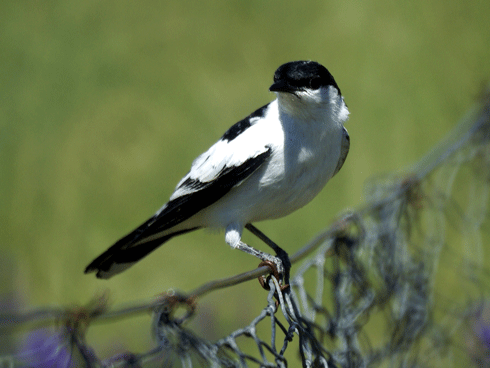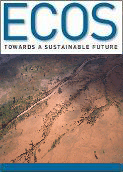
|
Published: 19 November 2012
Native street trees can boost birds’ survival
A world-first study shows that the amount of native trees on suburban streets has a big effect on the numbers and types of birds in the area.
As native birds continue to lose their homes due to the spread of Australia’s cities, scientists are urging city planners and householders to help save them by planting more Australian trees.
‘We found that suburbs with more than 30 per cent native street trees have 11 per cent more bird species of all types than those with exotic street trees,’ says Dr Karen Ikin, from The ARC Centre of Excellence for Environmental Decisions (CEED) and The Australian National University.
‘More birds were also found in nature reserves next to the suburbs. This shows that how we manage our urban areas has a significant effect on wildlife in surrounding locations.’
Dr Ikin and her colleagues surveyed 66 bird species at 40 locations across Canberra and grouped native birds by their tolerance of urbanisation. Their research has been published in the journal
‘With the exception of native birds that avoid urban areas, a significantly higher number of bird species – both feral and native – were found in suburbs with more than 30 per cent of Eucalyptus trees,’ says Dr Ikin.
Current street tree plans often include exotic trees such as oak, elm and plum trees. Although these trees have benefits – such as letting more light through in the winter – the researchers have shown that they may have a negative effect on native birdlife.
Eucalypts, on the other hand, have a crucial role in maintaining biodiversity, says Dr Ikin. ‘They provide food, nest sites and shelter for birds via foliage, flowers, bark, canopy air spaces and leaf litter.’
In an earlier study, the researchers showed that parks with large eucalypts – of over a metre in diameter – had up to three times as many bird species as parks with smaller trees. ‘Along with this research, we now have good science to support the planting and retention of native trees, especially large ones, in urban areas,’ says Dr Ikin.
‘While there are safety risks in keeping big trees, a lot of wildlife, including endangered animals, such as the superb parrot and the tiger quoll, depend on them,’ says Professor David Lindenmayer, one of the study’s co-authors from ANU and CEED. He recommended that instead of removing old trees, they could be pruned, or held in exclusion zones or labelled with warning signs to protect the public from any danger.
‘We can also proactively plan for future large trees, so that the younger can replace the over-mature ones. In addition, these trees can be given greater legislative protection,’ the researchers say.
‘Urbanisation is unavoidable, but our studies show that there are ways to lessen its negative impact on Australia’s native wildlife – we just have to think more carefully about how we design our suburbs.’
The general public can help by planting native shrubs and trees at home, and by keeping more tree logs and leaf litter in parks and private gardens for native birds – particularly those that currently avoid urban areas, such as the threatened white-winged triller – to use.
‘Research shows that people enjoy seeing and hearing birds around their home, work and recreational spaces, even if they are not interested in what the individual species are. So having charismatic and colourful ‘native favourites’ that ordinary people can recognise can improve their well-being.’
Source: CEED




